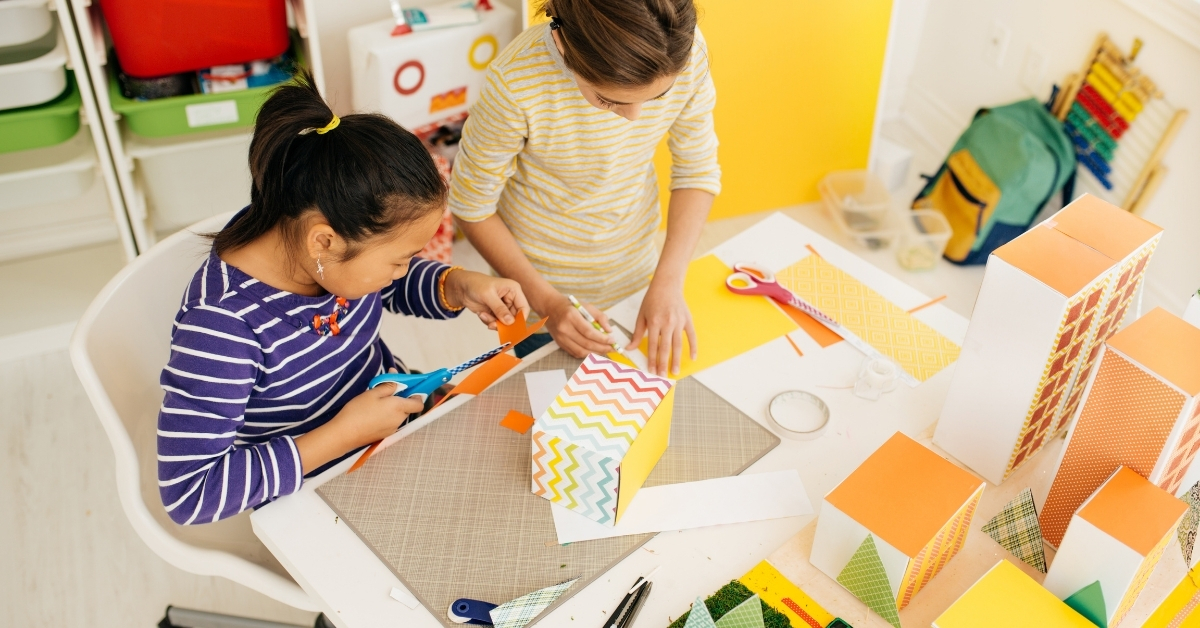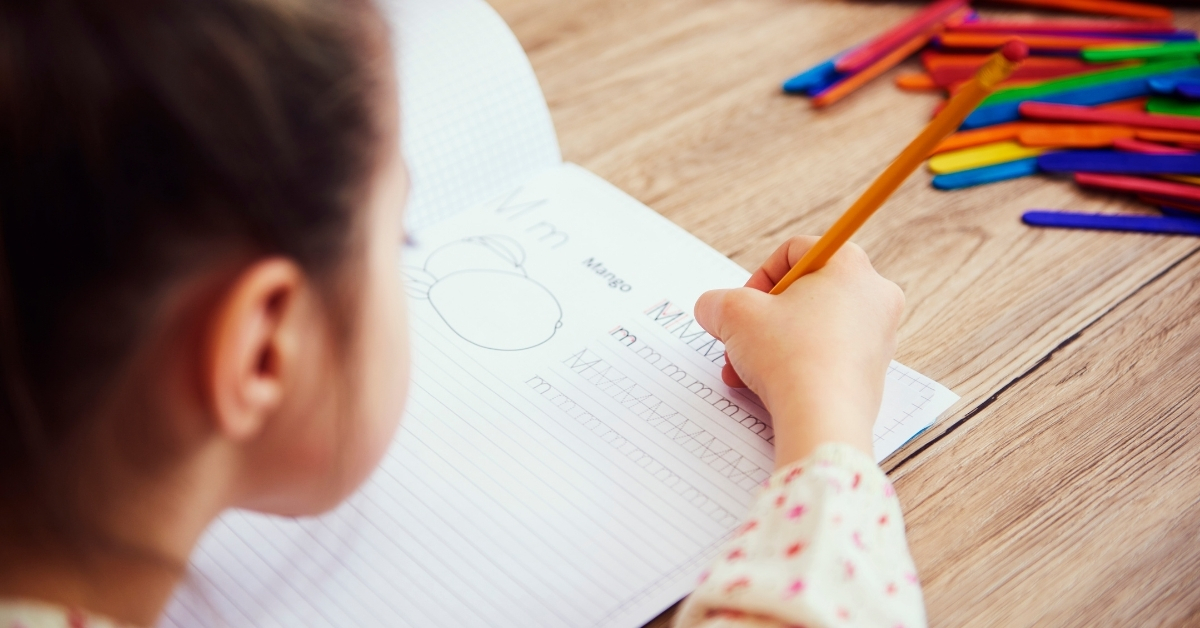I’m taking a short Montessori course for parents who are homeschooling their elementary kids and sharing what I learn here in the blog. This is the ninth article in the series, combining the “Elementary Work Cycle” and “Independent Work” modules. You can start from the beginning here.
♥
If you’re a Montessori newcomer, one of the first things you’ll notice is that children’s learning activities tend to be referred to as “work”. That might make it sound serious and effortful and not particularly suited for kids, but (a) Maria Montessori is often quoted as saying, “Play is the work of the child,” and (b) work vs. play is a false dichotomy, really, isn’t it? The meticulous digging and brushing for bones might not be most people’s idea of fun, but it could very well be, for a paleontologist on the cusp of his first major find. Making a detailed itinerary complete with public transportation routes for a two-week multi-country trip might seem like a lot of work — and it is — but that doesn’t mean it isn’t fun for someone who likes doing that sort of thing. And Montessori works on the philosophy that children naturally like learning.
So: work in Montessori = purposeful activity that leads to learning.
Another term you’ll often hear is the Montessori “work cycle”. People sometimes refer to morning and afternoon Montessori work cycles the way we would usually say morning and afternoon classes — basically, an uninterrupted block of time, often lasting 3 hours, during which children do work, i.e. learn. At other times, the Montessori work cycle may be used to refer to the multi-step process by which a child thoroughly learns something; it’s possible for this to be completed during one 3-hour session, but it often takes longer, especially if it involves skill mastery that is better paced over several days.
So: Montessori work cycle = either the time or the process.

Either way, in the Montessori course I’m taking, we’re taught that the elementary work cycle is composed of the following:
- Lessons — called “presentations” in many Montessori schools, including my son’s — is when a topic is introduced to the child for the first time.
- Follow-up work is self-explanatory; my son says that, for example, if he was presented a lesson by his teacher using a set of materials, follow-up work would be his working on those materials on his own. It could also be some other activity that’s related but not identical to how the lesson was presented. The purpose is to make the lesson stick by deepening and extending neural connections to it.
- Practice work, skill-based work, or ongoing work is done for things that we need to perform lots of times in order to master, such as spelling, or math, or correct grammar, or handwriting — things that we master so that we can do them automatically in the future without having to spend so much effort or brain space on them.
- Big work — or great work — refers to projects, which are a very important component of the elementary Montessori learning process. They not only help cement learnings from lessons but help our kids develop valuable organizational skills and executive functioning.

Practical Tips: Lessons/Presentations
- Lessons can be presented in different ways: you can tell a story, you can use hands-on materials, etc.
- A child should receive one lesson per day, ideally two: one in the morning and one in the afternoon. I’d say the nice thing about homeschooling is that if we’re going to be really busy on a particular day — if you have a big work thing, for example — we can always adjust our schedules, have our kids do independent work the whole day, and do catch-up lessons afterwards.
- Lessons should be kept short, around 15-20 minutes, because the purpose of lessons is to plant a seed. Most of the learning actually takes place afterwards, when the child does follow-up work and great work.
- With some kids, it might help if you have a designated corner of the room where you give presentations, so that kids will go into “lesson mode” there. With other kids, it might be better to change things up and use different venues; the outdoors would be nice.

Practical Tips: Follow-Up Work, Practice Work and Great Work
- Children can have their own ideas on what kind of follow-up work they would like to do for a lesson, but if they’re stuck, you might want to give them ideas or choices. You can ask questions like: “What would you like to create to show what you learned from this lessons? How would you like to do X? Or how about Y?”
- For math lessons, follow-up work could be the children making their own math problems and then solving them.
- If your kids find practice work tedious, help them understand the rationale behind it. Activate their “reasoning mind”.
- You can tie skill building to something they would like to do. For example, if they want to write a letter to a friend, you can say, “Let’s practice your handwriting this week and then write your friend a letter.”
- Great work can be directly inspired by the day’s lessons or interests picked up along the way — either way, encourage it! Project management is a valuable 21st-century skill.
How to structure projects:
- Define the task or objective
- Identify the smaller tasks within the larger task
- Make a timeline for completion
- Choose and implement strategies
- Monitor, problem solve, adjust if necessary

Practical Tips: Work Journals
- When doing homeschooling, having a work journal will help a child organize their day: one sheet of paper per day, with the date on top, and then a list of lessons and independent work planned for that day.
- You can make an idea board or a sort of master list of activities that your child can do, which they can consult in the morning and from which they can choose what they will include in their schedule. Your list can consist of lessons (“Mga Anyong Tubig”) or activities (“make a poster”).
- In our case last school year, I didn’t have a master list. I started with writing all the lessons/activities my son could do on post-its that I stuck to the wall, so he could just scan through them and get which ones he wanted to do. BUT I eventually stopped doing it because I realized it didn’t really add that that much value to our process and just took time (not to mention post-its) that could have been used on something else. The process that we eventually arrived at that worked and was easy to implement? I basically just printed out all the worksheets that my son could already do by himself and let him choose what he wanted to work on each day.
- In our case last school year, I didn’t have a master list. I started with writing all the lessons/activities my son could do on post-its that I stuck to the wall, so he could just scan through them and get which ones he wanted to do. BUT I eventually stopped doing it because I realized it didn’t really add that that much value to our process and just took time (not to mention post-its) that could have been used on something else. The process that we eventually arrived at that worked and was easy to implement? I basically just printed out all the worksheets that my son could already do by himself and let him choose what he wanted to work on each day.
- It’s perfectly okay for kids to:
- Switch things up
- Cross out an item in the list and replace it with something else
- Take longer than first thought on an activity
- Make adjustments to the plan — flexibility is the key
- Switch things up

Final Thoughts: Quality Over Quantity, Always!
My son had a tendency to choose a lot of easy activities — I guess because doing a lot gave him a sense of accomplishment — and I respected that drive of his. At the same time, though, I would say, “How about doing two hard works today?” (They weren’t even difficult, necessarily; some of them just took longer to do.) He would still be the one to choose which “hard” activities he would do, so he still had that sense of autonomy, and it was a separate sense of accomplishment in itself, being able to rise to that particular challenge of doing X number of “hard” works.
Kids are different, of course, and it will be up to you to figure out how to motivate your own child.
“We don’t go to school to do many works; we go to school to learn” is a phrase that I must have uttered a zillion times. It doesn’t always work, but…oh well, I think it’s worth repeating till it sinks in.


